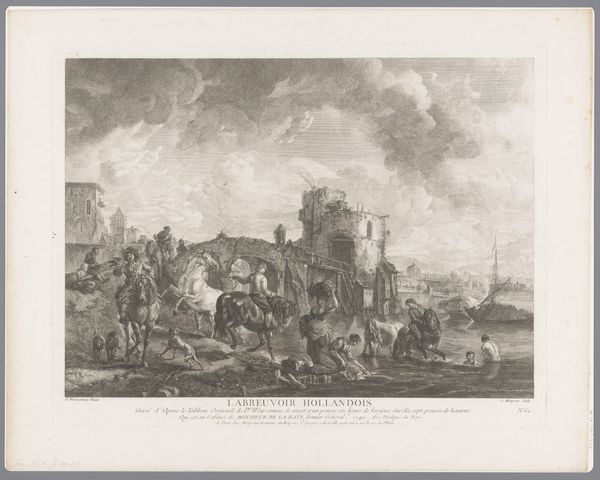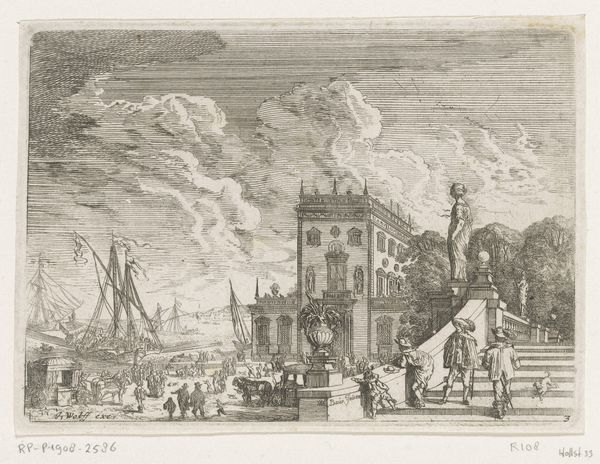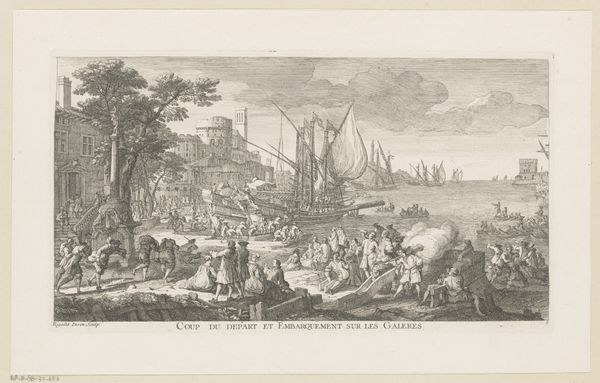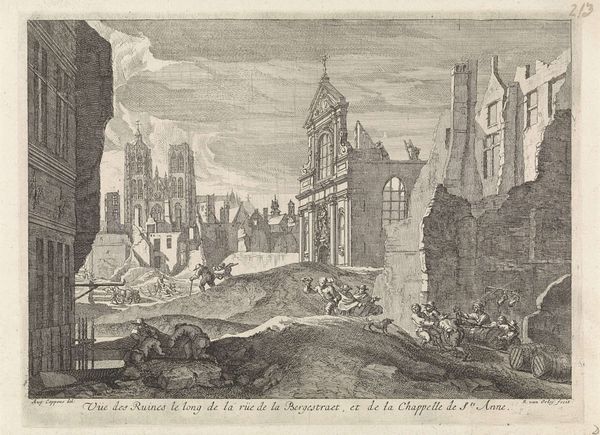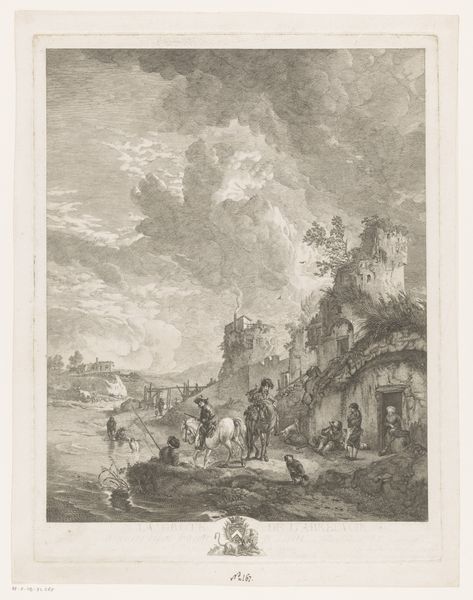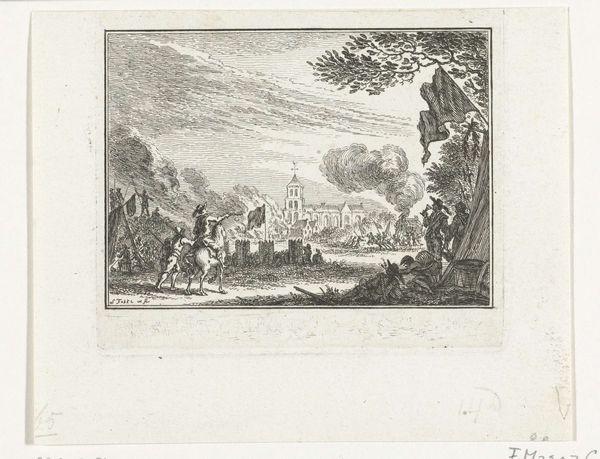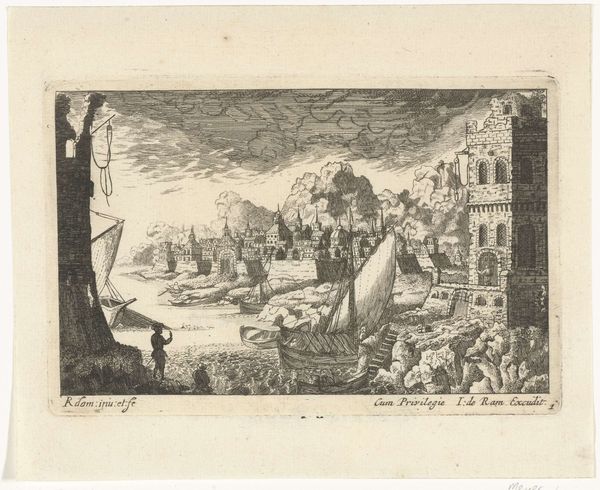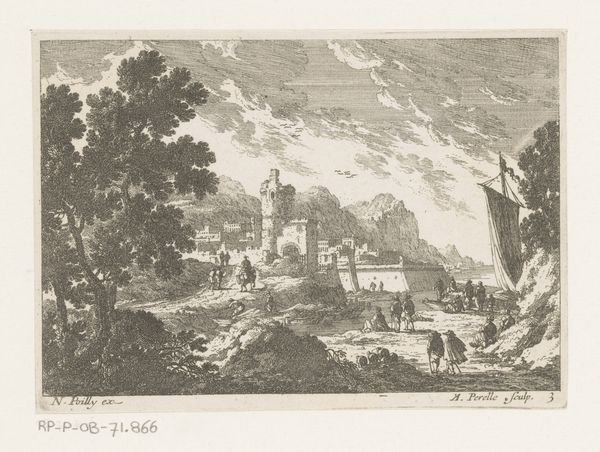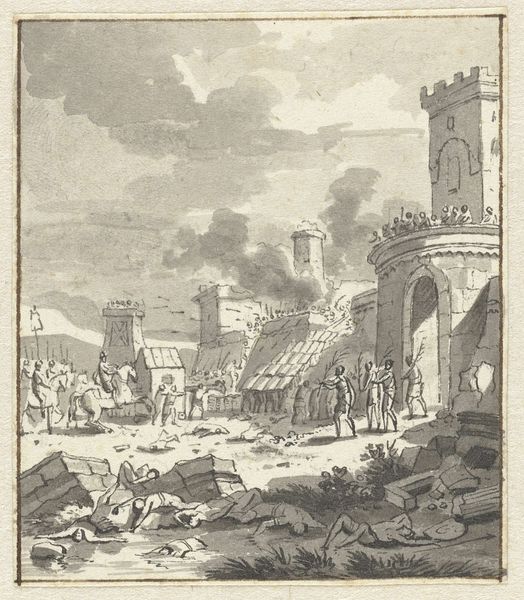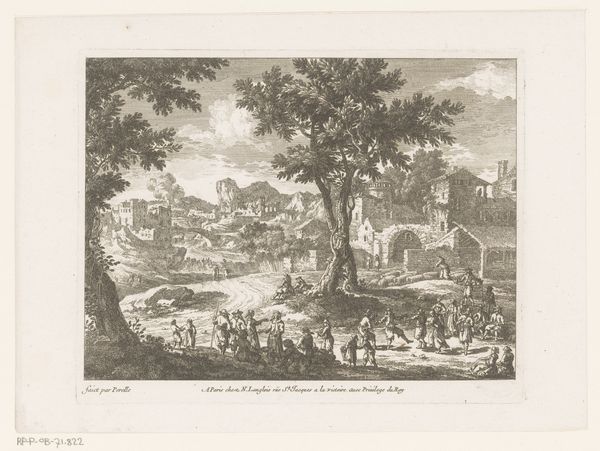
print, engraving
#
baroque
# print
#
landscape
#
cityscape
#
history-painting
#
engraving
Dimensions: height 177 mm, width 291 mm
Copyright: Rijks Museum: Open Domain
Editor: Here we have Isaac Major's engraving, "Aeneas and Anchises Fleeing Troy," likely created between 1586 and 1630. The scene is dramatic, the city ablaze...it looks so incredibly detailed for a print. What aspects of this piece strike you as most significant? Curator: Immediately, the choice of engraving commands attention. Prints served as a primary form of mass communication and dissemination of knowledge in this era. Think about the labor involved – the craftsman meticulously etching the image onto a metal plate. It wasn't just art; it was a reproductive industry. Who had access to these images, and what impact did they have on popular imagination and historical understanding? Editor: That's a great point; it's easy to forget how widely available prints were and the impact this image might have had at the time. Was the story of Aeneas a common subject? Curator: The Aeneid held tremendous political weight. Representing Aeneas, burdened yet resolute, served to legitimize new leadership and empires by connecting them to the legacy of Rome. The material realities – who commissioned this work, who printed it, and who purchased it – reveal its intended audience and the messages being promoted. Were they also considering that prints are inherently reproducible? Editor: Yes, certainly, it is reproducible. It makes me think about the intent... beyond simple reproduction, perhaps aiming for a longer life as part of an illustrated book? I’d love to research its purpose and societal impact some more. Curator: Precisely! Investigating its consumption unlocks layers of meaning about power, patronage, and the function of art within a society grappling with shifting ideologies. Understanding art is deeply intertwined with understanding its production.
Comments
No comments
Be the first to comment and join the conversation on the ultimate creative platform.
